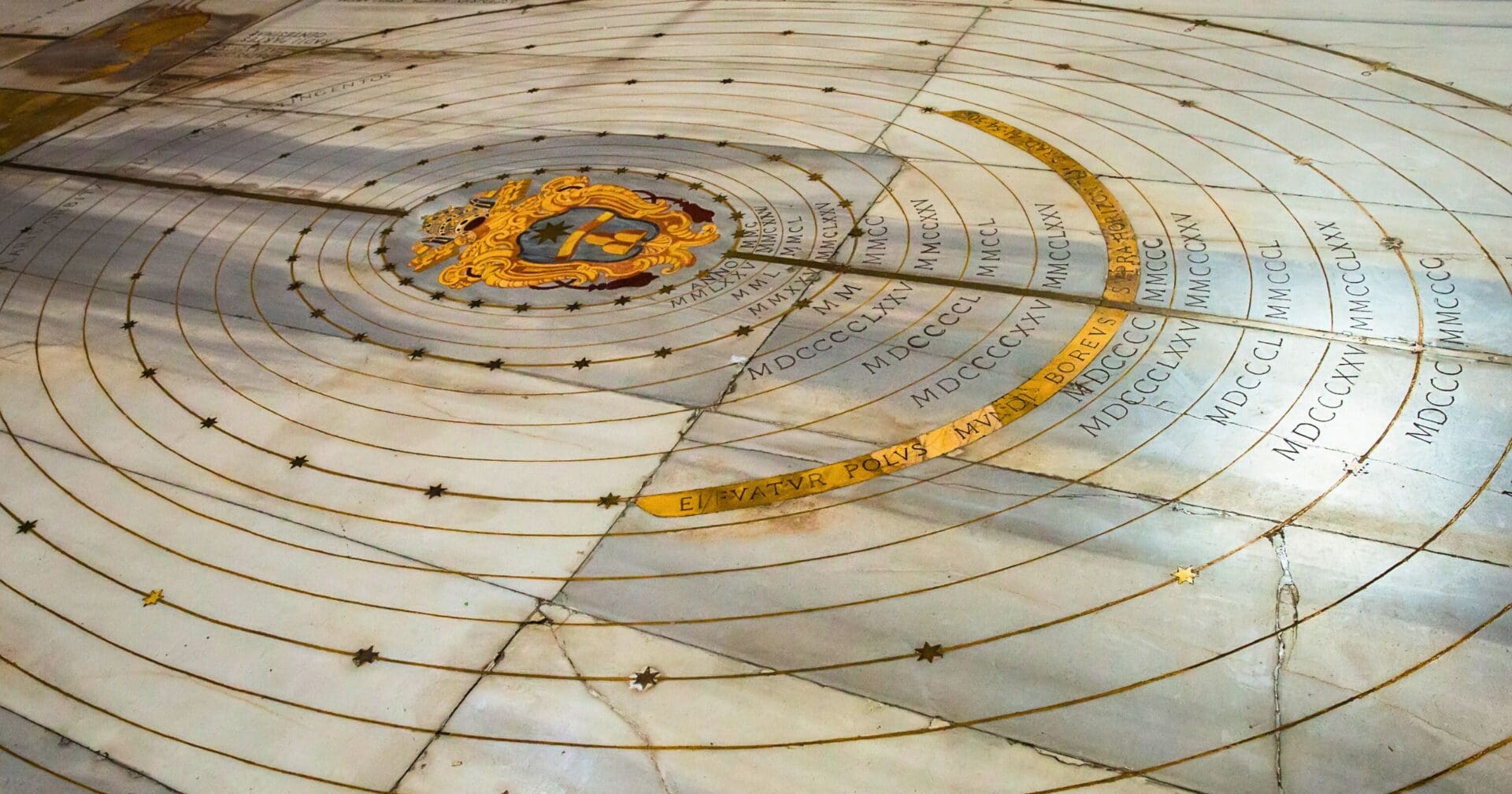Situated about two miles east of the Vatican in Rome, the Basilica of Saint Mary of the Angels and the Martyrs appears at first glance to be no different than any other impressive and awe-inspiring Catholic church. However, a visitor who steps inside the church at exactly noon will discover that it holds a cosmic secret.
In 1541, Sicilian priest Antonio Lo Duca was inside the ruins of the ancient Roman baths of Diocletian, when he had a vision of the Blessed Virgin Mary and angels. Twenty years later, Pope Pius IV ordered the construction of the Santa Maria degli Angeli e dei Martiri within the frigidarium of the ancient baths. It was to be dedicated to “the Most Blessed Virgin and all the Angels and Martyrs,” after the vision of Lo Duca. The design and architecture of the church was placed into the hands of none other than Michelangelo himself. While he passed away a year later, the designs were faithfully completed by a nephew of Lo Duca.
For over a hundred years, the new church was used to celebrate Mass, hold funerals, and serve as the resting place for many clergy. However, in 1702, Pope Clement XI commissioned a meridian line, or sundial, be added to the church. Its purpose was to verify the accuracy of the new Gregorian calendar, predict Easter exactly, and to give Rome a meridian line better than the recently constructed one within the San Petronio Basilica in Bologna.
The entire sundial spans almost half the church’s width, coming in at 150 feet, and is built exactly along the meridian that crosses Rome from south to north. Running along the entire length of the line are each of the twelve zodiac signs laid in the marble, used as astronomical markers. Every single day at solar noon, a ray of light shines through a small hole within the ceiling and casts perfectly along the meridian line.
During the summer solstice in June, when the sun is highest in the sky, the ray of light will hit the meridian line closest to the wall. However, during the winter solstice in December, it hits farthest from the wall. At the equinox in March or September, the ray of light will cast perfectly between each side. Astronomers used the position of light on the line to determine the time of year, and verify the accuracy of the Gregorian calendar and thus predict Easter exactly.
The church was also used to track the position of the stars in the sky. Polaris, Arcturus, and Sirius, were observed through separate holes within the ceiling using a telescope.
While today the meridian line is no longer used to calculate the time of the year, that doesn’t it mean it can’t be. Placing a level across either line of the meridian reveals the floor is perfectly balanced – and hasn’t shifted for over 1500 years. Thanks to the skillful Roman architects that designed the foundation for the ancient baths of Diocletian, the meridian line at the Basilica of Saint Mary of the Angels and the Martyrs is accurate as the day it was built.















Great article
St. Joseph I know you had a hand in this construction how else can you explain this accuracy of this floor, surely not mere man. Please St. Joseph help me build a accurate balance in my mind..
Another note …. summer solstice in June has days at their longest, around the Feast of St John the Baptist. Days get shorter as season moves to Christmas, winter solstice, when days are at their shortest. After Christmas, the birth of Christ, days get longer. Recall words of John … I must decrease so that He might increase …